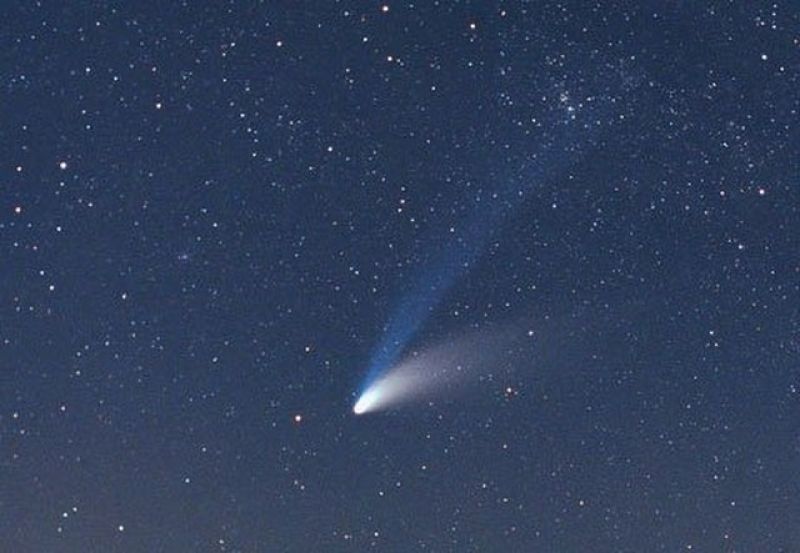- Met office issues nationwide 72-hour heat alert |
- No respite from heat wave for five days: Met office |
- Over 2,100 men evacuated as Indonesian volcano spews ash |
- Dhaka air unhealthy for sensitive groups Saturday morning |
- North Korea conducts a test on 'super-large warhead': KCNA |
What is ‘the green comet’?

Comet. Andy Roberts from East London, England. Creative Commons
Jehangir Hussain
An exotic comet is causing excitement.
This particular comet is called C/2022 E3 (ZTF) and was discovered by astronomers in March 2022 at the Zwicky Transient Facility in California. It has been nicknamed “the green comet” because of its verdant glow, and is thought to have come from the Oort cloud – a collection of icy bodies that are believed to exist in the farthest-flung part of the solar system, reported the Guardian..
While some comets are relatively frequent visitors – Halley’s comet turns up every 76 years on average – C/2022 E3 (ZTF) orbits the sun every 50,000 years. In other words, the last time it could have been visible from Earth was in the stone age, when not just modern humans, but Beanderthals, too, may have directed their gaze starwards.
The green glow isn’t unique to this comet, although it is an interesting feature. The phenomenon is thought to arise from an interaction between light from the sun and diatomic carbon. Diatomic carbon is an unstable, gaseous form of the element in which carbon atoms are bonded together in pairs. Scientists say it is formed on the head of the comet when larger carbon-based substances are broken down by sunlight as the comet approaches the sun.
When diatomic carbon is excited by ultraviolet rays, it gives off light, resulting in the green coma that has been seen surrounding the nucleus of the comet. However, ultraviolet light can also cause diatomic carbon to break down. This, experts say, explains why the tail of the comet is not green.
Not all comets are visible to the naked eye, and it is often difficult to predict how bright a comet will be. But reports suggest C/2022 E3 (ZTF) has already been spotted by some observers without equipment once the moon had set, and it is hoped it will remain visible to stargazers when it makes its closest approach to Earth on Wednesday and Thursday, at which point it will be 0.28 AU (26 million miles) from our planet.
That said, you will get a better view if you can get your hands on a pair of binoculars or a telescope.
Your best bet is to head out on Wednesday night to somewhere really dark – away from the bright lights of a city at night – and look for a smear in the sky.
“The comet is in the north of our skies, currently close to Polaris, the pole star directly due north,” said Jake Foster, a Royal Observatory astronomer. “The comet is best viewed after midnight, when it reaches its highest point in the sky. It will move a significant distance across the sky from night to night as it makes its way towards the constellation of Taurus over the coming weeks.”
Foster added that there were various free stargazing apps that could pinpoint the comet’s location to make the task easier.
“With a pair of binoculars or a small telescope, you should be able to spot the comet as a faint green blob,” he added. “It you are lucky and your skies are particularly dark you may even be able to see one of its vast tails, too.”
jehangirh01@gmail.com

